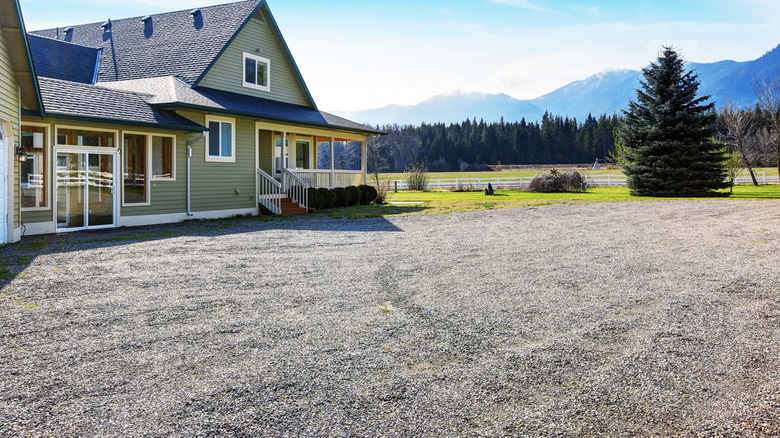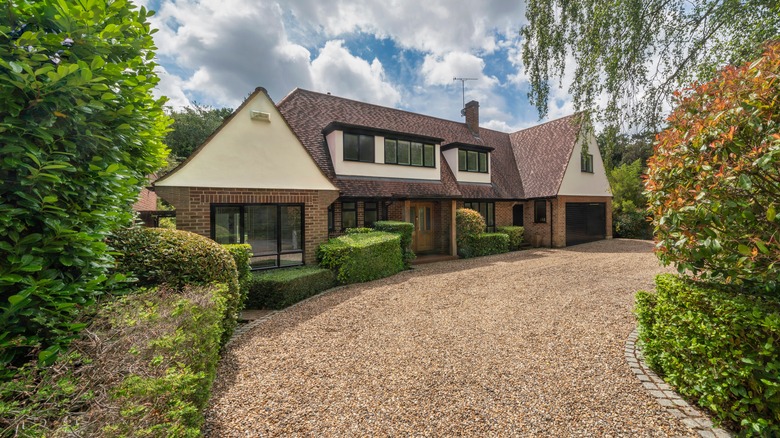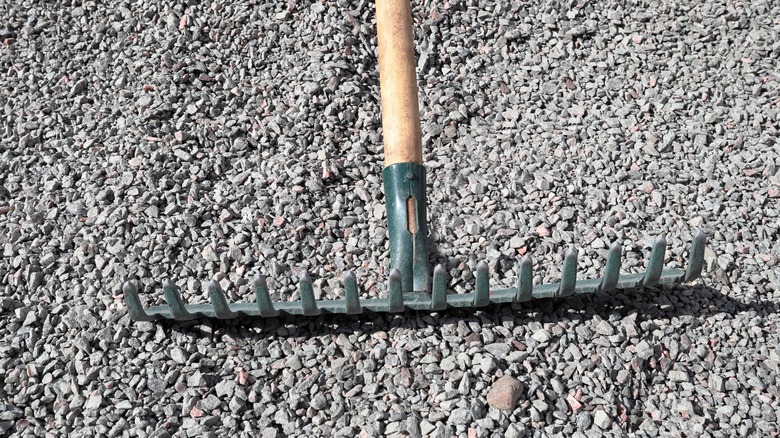The Best Material For Edging Your Gravel Driveway (& The Type You Should Avoid)
We may receive a commission on purchases made from links.
Gravel driveways are favored by many for several reasons: They're visually pleasing, with a natural and rustic appeal, cost-effective, easy to install, require minimal upkeep, and are highly durable — they can last up to 100 years with proper maintenance.
However, one of the drawbacks of a cost-effective gravel driveway is that stones can easily spill over into lawn areas and borders. A key aspect of maintaining a gravel drive is installing edging, the material that defines the boundaries of a driveway, typically installed where the driveway meets the grass or other surrounding areas. While many use it for aesthetic reasons, edging serves several practical functions. It keeps the loose gravel in place and helps manage water runoff, minimizing the risk of erosion. It protects both your lawn and driveway, reducing the need for repairs on the latter. Driveway edging also makes parking easier, and can increase curb appeal, which might even benefit your property's value.
Concrete is one of the most popular and budget-friendly materials for edging your driveway. It offers durability and a clean appearance. It's also versatile; concrete can be shaped to fit various designs, stamped with patterns, and stained in different colors. If you're not afraid of a little cement mixing, you can pour your own concrete borders by digging a trench and creating a mold with ¼-inch plywood strips. Going this route should run you under $2 per linear foot. For a pro look, you might want to equip yourself with a curb trowel from Amazon or your local hardware. Alternatively, you can install concrete edging stones, such as these overlapping Bullet Edgers from The Home Depot (which will allow for curves).
Other viable options that provide a timeless and natural look
Bricks are another durable and budget-friendly option that offer lasting appeal. While brick edging beautifully complements homes with brick siding, it enhances nearly all architectural styles. Additionally, bricks are versatile, available in a range of shades from classic red to contemporary tan and gray hues.
Not a fan of bricks? Just like you can use pavers to edge your lawn, you can also install them around your driveway to act as a generous border. If you prefer driveway edging with a more natural feel, two other excellent choices are wood and stone. Wood is a popular option for achieving either a rustic or modern vibe and is versatile enough to be cut into various lengths. However, it requires regular sealing and maintenance to prevent rot and pests (especially when sunk into the ground), and its lifespan is generally shorter than that of more durable materials.
Stone is another option that provides a natural look, with cobblestone and Belgian blocks being two of the most popular choices. Stone edging is durable and long-lasting, but is typically one of the most expensive options. They're also hard to remove, making it a more permanent choice. However, the same can be said for any edging that is installed into the ground, including bricks and concrete.
Why you should avoid plastic edging
Plastic lacks the charm of other materials, such as wood or cobblestone, and many consider it visually unappealing. While plastic edging is inexpensive and easy to install, what saves you money upfront may cost you more in the long run. Plastic isn't durable or sturdy and is prone to cracking, breaking, fading, and weakening over time. There are also environmental considerations; as plastic degrades (which happens faster when exposed to the sun) it breaks down into microplastics. Overall, long-lasting choices like concrete, stone, and natural rocks can save you money in replacement costs and look a lot more sophisticated. Plastic landscape edging between lawn and borders can give you several years of use (especially in shaded areas) — but when placed around a gravel drive, there's the risk that some areas get accidentally driven on, bumped up against by car tires, or pressed out of shape by the gravel. If this happens, plastic edging will likely buckle, kink, or crack, whereas more permanent edging shouldn't even budge.
Besides installing edging, here are a few simple pointers for maintaining your gravel driveway and keeping it pristine. Raking is crucial, as cars and weather can cause the gravel to become unevenly spread, resulting in both a messy look and a driveway that is harder to walk and drive on. You might also want to clean your driveway's gravel with a pressure washer from time to time. Additionally, regular raking with a landscaping rake like the Extreme Max 36-inch screening rake helps remove debris and prevent weeds, and you will want to be vigilant about adding gravel to potholes and areas where you see water pooling.


